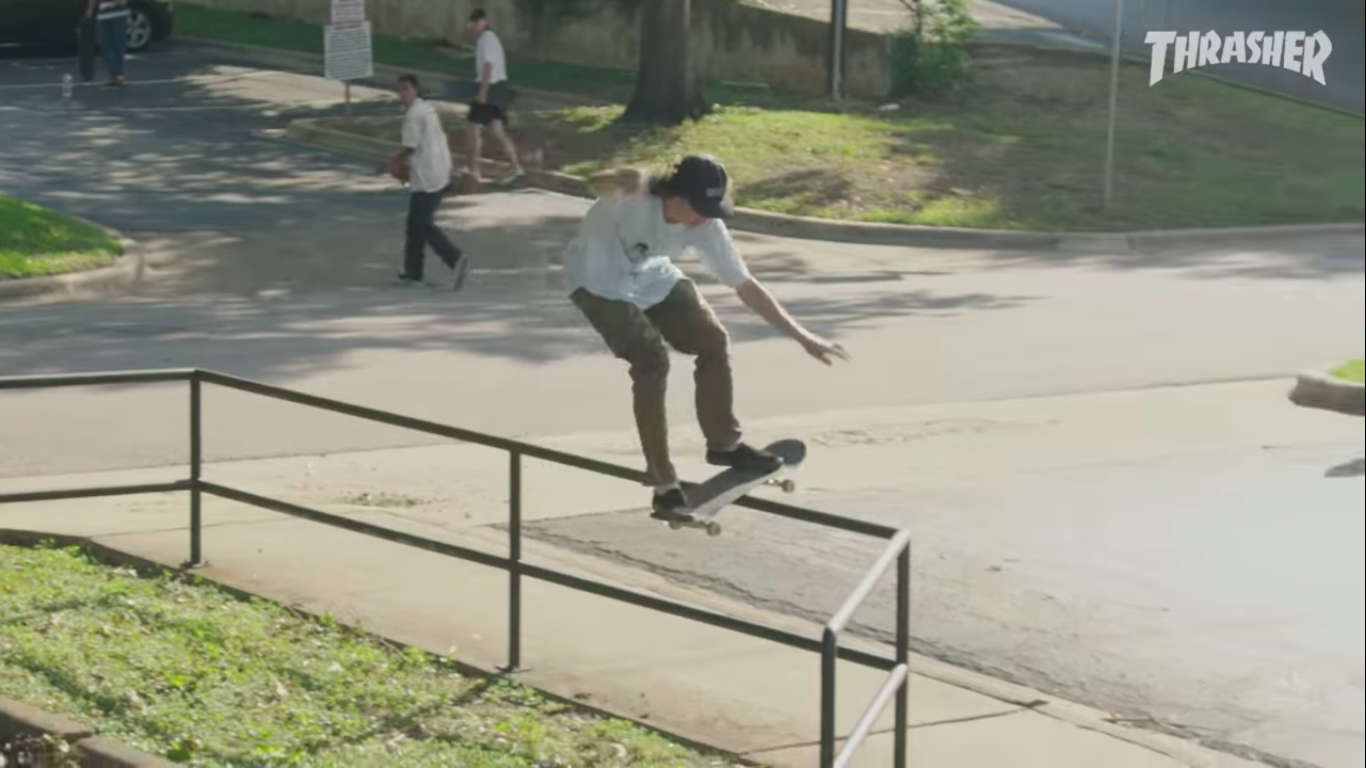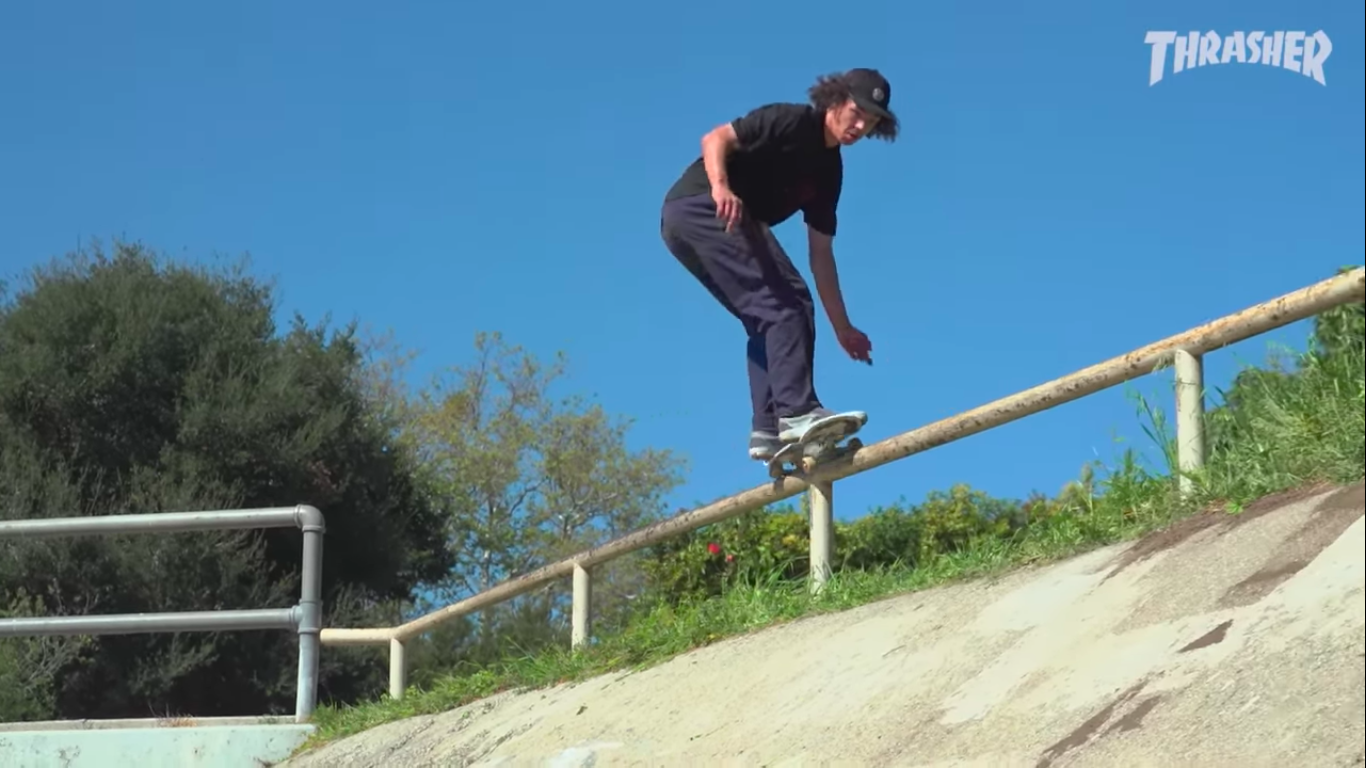A World In Which Both Tricks Are True: Tanner Van Vark's T.V.V. part
What are the physics that hold a skate trick together? For the most part, it depends on the interrelation of power, pop, flick, and commitment. Did the skater boost over the picnic table, or merely clear it? Did the trick seem to issue from them, or were they overselling it? How crisp—no, how poised was their flat ground? And did he have to fakie flip that high in that line (see: Kalis, Josh. Photosynthesis, 2000)? Though a million tiny decisions inform this equation, the laws of skate physics are virtually inviolable: from the placidity of Louie Lopez, to the crispness of Alexis Sablone, to the haggard pleasure of a Baker Maker, these fundamentals forever govern both how a trick is done, and how it will be judged.
But Tanner Van Vark’s T.V.V. part for Real reminds us that there has always been another dark science to trick mechanics, one which torques our comprehension of what or how a trick is done: the alley-oop. To some extent, it constitutes the quantum mechanics of skateboarding: an alley-oop’s involuted motion turns the world inside out, not so much counter to our expectations, but rather, suggesting that a trick exists in multiple universes at the same time (e.g. frontside and backside, but together). T.V.V. is full of these small miracles, as in an early clip involving a simple back 180 onto a flat bar. About half-way through the grind, something shifts, and Van Vark appears to be riding switch stance, as if he was doing an entirely different trick. It’s hard to explain what happened, but no matter how many times I rewound it, trying not to blink, I still could not figure out the science behind the shift—either, neither, both?
But Tanner Van Vark’s T.V.V. part for Real reminds us that there has always been another dark science to trick mechanics, one which torques our comprehension of what or how a trick is done: the alley-oop. To some extent, it constitutes the quantum mechanics of skateboarding: an alley-oop’s involuted motion turns the world inside out, not so much counter to our expectations, but rather, suggesting that a trick exists in multiple universes at the same time (e.g. frontside and backside, but together). T.V.V. is full of these small miracles, as in an early clip involving a simple back 180 onto a flat bar. About half-way through the grind, something shifts, and Van Vark appears to be riding switch stance, as if he was doing an entirely different trick. It’s hard to explain what happened, but no matter how many times I rewound it, trying not to blink, I still could not figure out the science behind the shift—either, neither, both?
When I first encountered Van Vark’s skating, however, I struggled to look past his basic uniform. His kit included Dickies, graphic t’s, slip-ons, and a five pannel hat that festooned a cartoonish frock of unkempt hair. Coupled with an arsenal of dorky, slappy- and wallie-based tricks popular on Instagram, the kid felt like a one-hit-wonder, a concession his board sponsor Real made to the imperatives of social media, and the strictly data-driven decision-making on the part of his shoe sponsor Vans. Association with these companies didn’t do Van Vark any favors, either: their image venerates a level of toughness and struggle, making Van Vark’s preternatural talent appear glib by comparison. I considered him a novelty, lacking the self-awareness or maturity it takes to develop those dork tricks into a fully fledged style like Gustave Tonneson’s, an ironic statement about skating like Jesse Alba’s, or to use them as a model of increased accessibility in the fashion of Unity’s collectivism.
But T.V.V. took me by surprise, demonstrating not only the extent of Van Vark’s ambitions, but also his canny mixture of playfulness and mathematical precision. In short, his maturity is reflected in his choice to eschew hucking for a bit of pre-planning and creative constraints, as in the alley-oop noseblunt on a Quikreted ditch, which unwinds with the complex geometries of a calculus theorem; or.a switch back lip on a jersey barrier, which he lands regular, as if the result of multiplying two negative numbers, switch and backside. The same temporal compressions come across in Van Vark’s propensity for spiral-like motion: whether he is doing a fakie hurricane on a flat bar, or a switch Bennet grind on a hubba, the outcome shirks linear thinking. For his almost ender, a convoluted frontside hurricane, he appears to embody multiple contradictory forces at the same time: he pops fakie, grinds switch, and turns entirely inside-out by not returning to true regular, rendering all directional qualifiers equally plausible, and therefore equally irrelevant.
Perhaps the arena in which Van Vark most contests the laws of (skate) physics is on the wall—or off it, as it were. It’s there, upon the vertical plane that he works his most perplexing magic. In some cases, he finds the gnarly in the minute, as when he scales down the parabolic arch of a two-story frontside wallride into a 180 out, a motion that suggests a fractal, endlessly repeating the same form at ever-diminishing dimensions. In other cases, he works in broad strokes, enlarging one of his typical slappy grinds into a cascading frontside slasher on the retaining wall of a ditch, or prefacing a fairly routine wallride to fakie with an entire frontside 360.
Perhaps the arena in which Van Vark most contests the laws of (skate) physics is on the wall—or off it, as it were. It’s there, upon the vertical plane that he works his most perplexing magic. In some cases, he finds the gnarly in the minute, as when he scales down the parabolic arch of a two-story frontside wallride into a 180 out, a motion that suggests a fractal, endlessly repeating the same form at ever-diminishing dimensions. In other cases, he works in broad strokes, enlarging one of his typical slappy grinds into a cascading frontside slasher on the retaining wall of a ditch, or prefacing a fairly routine wallride to fakie with an entire frontside 360.
In the end, though, everything boils down to the art of the alley-oop, whicn, for Van Vark, is not just a modification to a preexisting trick, but rather the grounds upon which he builds his entire style. Yet, for all its complexity, it is the simplest trick in the part that may actually offer the clearest summation of his ability to spin miracles. A few clips before his ender, Van Vark lisplides a rail with a strong right-hand bend. His position is characteristic of a typical lipslide, designed to leverage himself over and on-top-of the rail, but as soon as he hits the kink, a perceptual schism occurs. The lipslide is still happening, except he has impossibly forced his posture toward his nose, into a boardslide, with the trick effectively existing as two different versions of itself at once—who is to say which one he actually lands? In the end, most of us do not possess the math skills to work out this equation, but we can at least consider that Van Vark does not pose an either/or question. Rather, throughout T.V.V., he forces us to consider a version of skateboarding in which both tricks are equally true. •••



